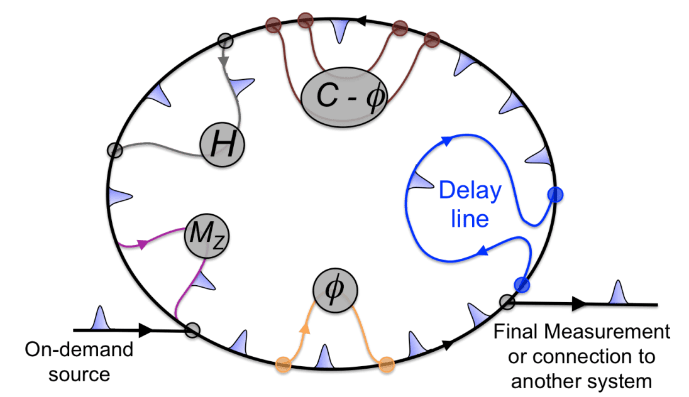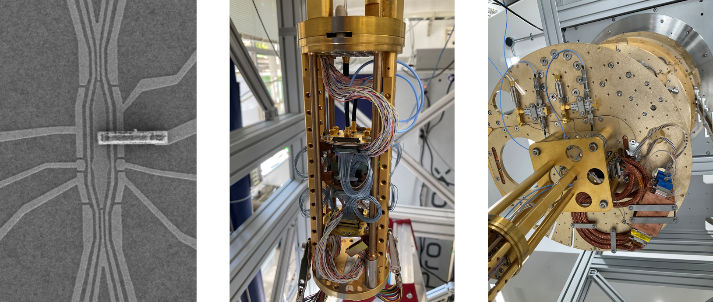Progress Report
Development of scalable Silicon quantum computer technology[4] Development of electron wave-packet qubits with new principle
Progress until FY2024
1. Outline of the project
The purpose of this project is to develop a new quantum computation method using qubits based on electron wave packets. Uniquely, these wave packets propagate stably through semiconductor circuits without deformation. Our future goal is a loop circuit system where numerous wave packet qubits repeatedly traverse the same quantum circuits under varying conditions. This approach aims to efficiently control many qubits using minimal hardware.

To realize this, we are tackling key challenges: developing technologies for (1) high-density generation and high-fidelity manipulation of these wave packet qubits, and (2) quantum mechanical control of their propagation and the readout of individual packets. We aim to establish the foundational technology for this novel quantum computing paradigm.
2. Outcome so far
In Objective 1, we conducted experiments on the transport of electron wave packets in quantum interferometers and designed a quantum computation system using them. We injected DC and pulsed currents simultaneously into a quantum interferometer and evaluated the visibility of interference. It was found that the visibility of the interference strongly depends on the magnitude of the DC voltage, while for pulses of less than 1 mV, it is almost independent of their amplitude. This result suggests that the quantum state of electrons injected by DC voltages relaxes in short distances, whereas the state of short electron wave packets injected by electric pulses is preserved over long distances. We also found that the electron wave packet propagates independently of the DC current. On the other hand, one of the issues for conventional gate-defined interferometers is that we cannot fully suppress electron backscattering. We designed quantum circuits using quantum Hall edge channels that do not suffer from backscattering. We also designed a new medium-scale quantum computation system and fabricated a prototype device.

Regarding Objective 2, we have been developing readout technology for electron wave packets. We use a singlet-triplet spin qubit (defined by two electron spins) as an electrometer. Interaction strength is adjusted so that a nearby wave packet interaction results in a final singlet state, while its absence results in a triplet state. This allows mapping the packet's passage (presence/absence) onto the spin qubit's state for readout.
This fiscal year, we began measurements on fabricated samples, confirming electron wave packet generation and control. Furthermore, we tuned the quantum dots required for these spin qubits (serving as sensitive electrometers) and successfully observed Pauli spin blockade, which is necessary for spin state readout.

3. Future plans
In Objective 1, we aim to establish techniques for generating short electron wave packets on the order of picoseconds, and to demonstrate high-fidelity quantum manipulation and long-range coherence of electron wave packets. For Objective 2, we will continue the electron wave packet readout experiment, aiming for the detection of wave packets containing 10 or fewer electrons through single-shot measurements. These technologies will serve as the foundational techniques necessary for realizing quantum computers based on electron wave packets.